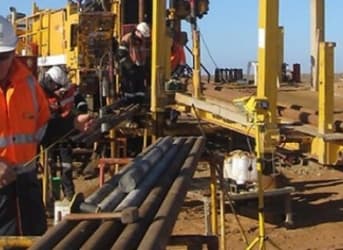As human history progresses, new technologies come along and old ones have to make way. In many cases, this process is made more costly and difficult, because of a lack of planned obsolescence in existing products and infrastructure. Unfortunately, that kind of thinking often leads to costly rework issues and the inability to understand that business is an evolutionary rather than revolutionary process. The latest example of this is in Britain where poor planning and an inability to think ahead for the future is now set to cost the government roughly 500 million pounds.
In the British case, the National Grid will remove less than 10 miles of overhead power lines at a cost of roughly 11 million pounds per pylon. The cables will be buried underground subsequently with the entire 45 pylon removal project being intended to help beautify the area in certain sections of country. The irony of the project is that it is entirely unnecessary had proper foresight been used. The countryside in question did not suddenly become more beautiful so the project is a really a reflection of the failure of the National Grid operators to look ahead and try to do work in a slightly more expensive but more viable long-term fashion. Related: Statoil Greenlights Unmanned Platform in North Sea
The British are hardly alone in this general dilemma. The Germans and the U.S. are going to face enormous decommissioning costs related to removing and replacing thousands of older windmills over the court of the next decade. Similarly, nuclear plant decommissioning costs are rising rapidly and making the decision to shut down old reactors even more economically difficult.
The reality is that in the energy space, decommissioning older infrastructure will always be a costly challenge. Regulators and industry groups in California and elsewhere pay some attention to the need to focus on the long term in energy development. But simply having a plan for decommissioning old facilities is not enough. Instead projects need to be built with a more realistic set of expectations for the cost and time frame for decommissioning. This is where the U.S. bankruptcy code and other financial issues can come into play. Related: Lithium: The Bright Spot For The Commodity Sector
Take solar rooftop installations for instance. Companies like Solar City install the installations on customers’ roofs at no upfront cost and they the consumer essentially pays for the installation over a period of two decades. Yet once that period is over, the rooftop installation will have very little value as the technology will likely be very obsolete and the system itself maybe so old that it requires constant maintenance. Yet homeowners are unlikely to pay to take the panels down and repair holes cut in the roof after the end of the system’s life.
The solution to this type of poor long term planning is fairly straight-forward. New energy installation projects should require a long-term sinking fund that will eventually pay for the decommission of the infrastructure in question. Such a sinking fund would be funded over the course of a project’s life. Related: Geothermal Energy Could Grow Six Fold
For instance, the cost of decommissioning a nuclear power plant is perhaps 10-15 percent of the plants upfront cost. Assuming a 7 percent return on assets, if the plant operator were required to contribute just 0.07 percent of the asset cost annually to a sinking fund for decommission (1 percent of revenues), assuming a 50 year plant life, and a 5 percent interest rate, the decommissioning would be fully paid for by the end of the nuclear plant’s life. The same plan could be applied to a variety of other infrastructure projects in the energy space.
It may be difficult to foresee when new technologies will come along that will supplant existing technologies, but with proper financial planning in advance, decommissioning existing infrastructure when needs change does not have to be a major burden for a firm or taxpayers.
By Michael McDonald of Oilprice.com
More Top Reads From Oilprice.com:
- Saudi Arabia Continues to Ramp Up Oil Output in Face of Market Glut
- European Leaders Cry Foul Against Germany’s Support for Gas Pipeline
- Colombia’s Oil Dreams Fall Short


















